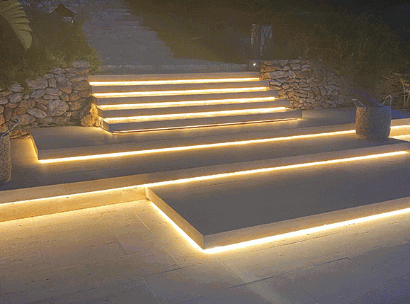LED linear lighting has become increasingly popular in both residential and commercial spaces due to its energy efficiency, longevity, and design flexibility.
We explore the benefits of LED linear lighting, the different types available, how it is used in various lighting applications, and important safety considerations when installing LED linear lighting.
If you are looking to enhance your home or illuminate a commercial space, LED linear lighting could be the ideal solution for you.
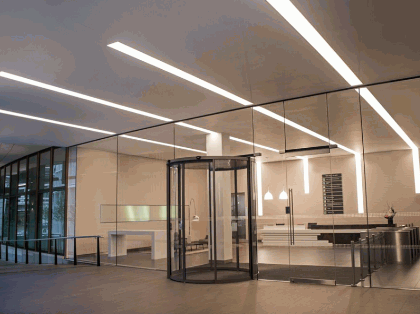
What Is LED Linear Lighting?
LED Linear Lighting refers to a type of lighting fixture that consists of long, narrow strips of light sources, providing uniform illumination in various settings such as offices, retail spaces, and warehouses.
These fixtures are versatile as they can be installed in suspended ceilings, cove lighting, or mounted on walls, offering a sleek and modern look to any space. LED Linear Lighting is known for its energy efficiency and longevity, making it a cost-effective solution for businesses looking to reduce their carbon footprint and operating expenses. These lights provide adjustable brightness levels and color temperatures, allowing customization according to the desired ambiance and task requirements.
Explore in-depth: Are LED Ceiling Lights Any Good
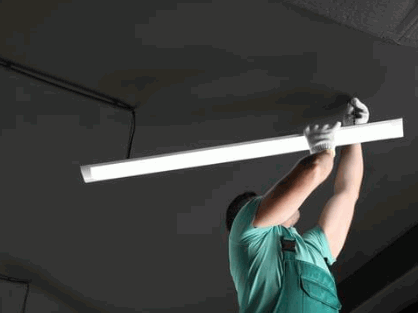
How Does LED Linear Lighting Work?
LED Linear Lighting operates by utilizing LED light sources arranged within linear fixtures, powered by a dedicated power supply to emit consistent and energy-efficient light.
The key components involved in the operation of LED Linear Lighting include the LED light sources themselves, a heat sink to dissipate heat efficiently, an optical lens to control light distribution, and a driver to regulate the power supply.
LEDs are known for their efficiency and longevity, making them a popular choice for linear lighting solutions. The design considerations for LED Linear Lighting often revolve around factors such as color temperature, luminous efficacy, beam angle, and CRI (Color Rendering Index) to ensure optimal performance and visual appeal.
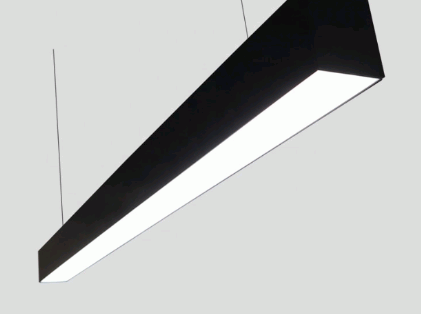
What Are The Benefits Of LED Linear Lighting?
LED Linear Lighting offers a multitude of benefits, including energy efficiency, longevity, design flexibility, and enhanced lighting effects suited for various applications.
Energy Efficiency
One notable benefit of LED Linear Lighting is its exceptional energy efficiency, attributed to the use of LED strip lights and optimized power supply systems.
LED strip lights play a key role in the energy-saving features of LED Linear Lighting by providing a uniform and efficient light output. These versatile strips are not only flexible in design but also consume less power compared to traditional lighting sources.
Efficient power supplies further enhance the energy efficiency levels of LED Linear Lighting systems. By converting electricity with minimal loss and providing consistent voltage to the LED strip lights, these power supplies ensure that the lighting system operates at optimal performance while minimizing energy wastage.
Longevity
LED Linear Lighting fixtures are known for their longevity and durability, with options available in the LED linear portfolio that offer robustness and long-lasting performance.
These LED linear lighting solutions are engineered to have a significantly longer lifespan compared to traditional lighting sources, making them a cost-effective and sustainable choice for various applications. LED Linear Lighting fixtures also require minimal maintenance, reducing the overall operational costs over time.
Specific products like the LED Linear Accent Lights and the Outdoor Linear Fixtures are designed with premium-grade materials that are weather-resistant and impact-resistant, ensuring they can withstand harsh environmental conditions and continue to perform optimally for years to come.
Design Flexibility
LED Linear Lighting provides unparalleled design flexibility, allowing for the creation of various lighting effects, dramatic visuals, and customized installations tailored to specific design recommendations.
Utilizing LED Linear Lighting in lighting design projects opens up a world of creative possibilities. The linear form factor allows for seamless integration into architectural elements, creating a cohesive and polished look. Whether used for accent lighting to highlight architectural features or for ambient lighting to set a mood, LED Linear Lighting can transform any space. With customizable options in color temperature, brightness levels, and beam angles, designers can easily achieve the desired ambiance and visual impact.
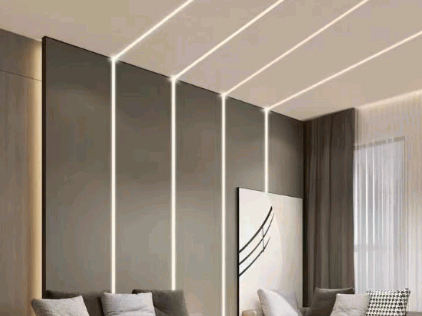
What Are The Different Types Of LED Linear Lighting?
LED Linear Lighting comes in various types, including rigid LED strips, flexible LED strips, and specialized LED profile fixtures, each offering unique advantages and applications.
Rigid LED Strips
Rigid LED Strips are a popular choice for linear lighting applications due to their straightforward installation, compatibility with LED aluminum profiles, and the availability of comprehensive lighting kits.
These LED strips offer a versatile and energy-efficient solution for creating uniform lighting in various indoor and outdoor settings. Their rigid structure ensures durability and stability, making them ideal for long-term use. When paired with aluminum profiles, they not only enhance the aesthetics of the lighting fixture but also aid in heat dissipation, improving the overall performance and lifespan of the LEDs.
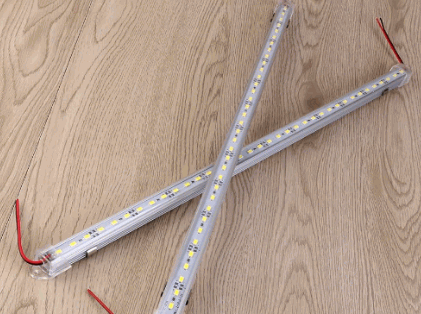
Flexible LED Strips
Flexible LED Strips offer versatility in lighting design, making them ideal for shelving applications, accentuating lighting drama, and providing ambient illumination in various settings.
These innovative lighting solutions can be effortlessly bent and curved to fit around corners, underneath cabinets, or along architectural features, offering a seamless integration into any space. Whether you want to create a cozy and welcoming atmosphere, add a touch of elegance to a display, or enhance the functionality of task lighting, flexible LED strips can be tailored to perfectly suit your needs.
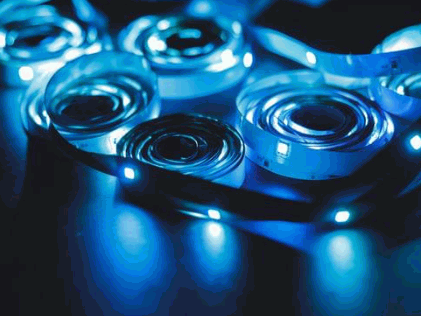
LED Profiles
LED Profiles offers enhanced lighting depth and customizable solutions for achieving unique lighting effects, catering to installations that require precision, depth, and added drama.
The versatility of LED Profiles makes them ideal for various settings, such as residential homes, retail stores, museums, or even architectural landmarks. These profiles can be seamlessly integrated into ceilings, walls, floors, or furniture to create a cohesive and visually appealing lighting design. By using LED Profiles, designers and architects can play with light angles, intensities, and colors to evoke different moods or highlight specific features within a space, enhancing the overall ambiance and functionality.
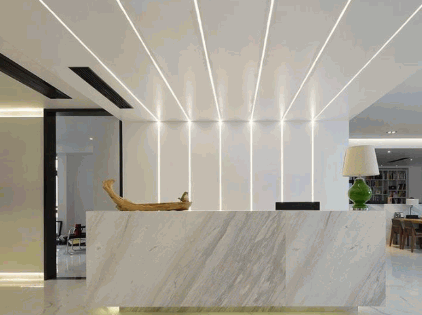
How Is LED Linear Lighting Used?
LED Linear Lighting finds extensive use in accent lighting, task-oriented illumination, and ambient lighting applications, offering tailored solutions for diverse lighting needs.
When used in accent lighting, LED Linear Lighting can highlight architectural details, artwork, or other focal points in a space. Its ability to create a subtle yet impactful glow makes it a popular choice for adding depth and dimension to a room.
In task-oriented environments, such as kitchens or workspaces, LED Linear Lighting provides focused illumination for activities like food preparation or reading. Its bright, even light distribution enhances visibility and reduces eye strain, improving overall productivity.
For ambient lighting, these fixtures can set the tone and mood of a room, creating a warm and inviting atmosphere. Whether used in residential or commercial settings, LED Linear Lighting offers customizable options to achieve the desired ambiance.
Accent Lighting
LED Linear Lighting excels in accent lighting applications, allowing for the creation of focal points, visual interest, and dynamic lighting effects in both commercial and residential settings.
When strategically placed, LED Linear Lighting can highlight architectural features, artwork, or specific areas in a room, drawing the eye and adding depth to the space. The versatility of these fixtures enables designers to play with contrast and shadows, shaping the mood of a room. By layering light levels, LED Linear Lighting offers a customizable experience, whether aiming to enhance a retail display, spotlight a textured wall, or illuminate a pathway. Its energy-efficient nature not only saves costs but also ensures longevity for consistent performance over time.
Task Lighting
In office environments, LED Linear Lighting serves as efficient task lighting, providing focused illumination for workspaces, enhancing productivity, and addressing specific lighting questions related to office functionality.
LED Linear Lighting is not only practical but also energy-efficient, making it a popular choice in modern office settings. Its sleek design and customizable options allow for seamless integration into various office layouts. Users find LED Linear Lighting particularly beneficial in reducing eye strain and improving concentration during long work hours. The versatility of these fixtures caters to different needs, from general ambient lighting to highlighting specific areas for tasks or meetings. By incorporating dimmable features and color temperature adjustments, LED Linear Lighting offers a tailored lighting experience that meets the diverse requirements of office environments.
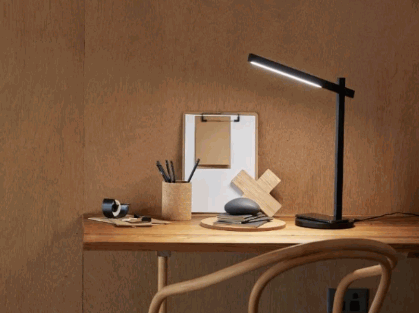
Ambient Lighting
Retail spaces and warehouses benefit from the ambient illumination provided by LED Linear Lighting, creating inviting atmospheres, enhancing visibility, and addressing specific lighting considerations unique to retail and warehouse environments.
LED Linear Lighting plays a crucial role in setting the right mood in retail stores, guiding customers through the space, and emphasizing product displays. In warehouses, this type of lighting ensures even distribution of light, minimizing shadows and enhancing safety measures. The versatility of LED Linear Lighting allows for customization according to the layout and requirements of each space, providing flexibility in design and functionality.
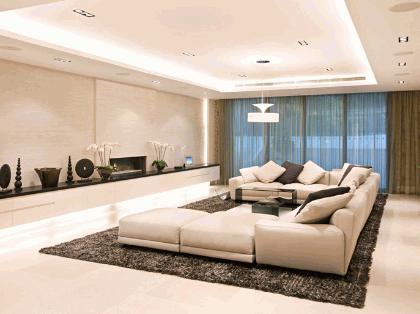
What Are The Safety Considerations For LED Linear Lighting?
When using LED Linear Lighting, it is essential to consider safety factors such as heat dissipation, electrical safety measures, and proper installation practices to ensure optimal performance and user well-being.
Heat Dissipation
Effective heat dissipation is critical in LED Linear Lighting setups, especially in shelving applications or designs that emphasize lighting drama, to maintain operational efficiency and prevent overheating.
Without adequate heat dissipation, LED Linear Lighting fixtures can experience reduced lifespan and diminished performance, leading to potential safety hazards. The ability to manage and disperse heat effectively not only ensures the longevity of the LEDs but also contributes to the visual impact of the lighting design.
Proper heat dissipation is essential for achieving consistent and reliable illumination in areas where dramatic lighting effects are desired. Through thoughtful consideration of design elements such as material selection, fixture placement, and ventilation, designers can create captivating lighting displays that make a lasting impression.
Electrical Safety
Ensuring electrical safety measures in LED Linear Lighting installations, particularly in warehouse settings, involves proper handling of power supplies, cable management, and compliance with safety regulations to mitigate potential risks.
Warehouse environments pose unique challenges when it comes to electrical safety in LED Linear Lighting applications. The high ceilings and wide spaces characteristic of warehouses require careful consideration of power supply management to ensure consistent and efficient lighting.
- Proper installation and maintenance are crucial to prevent electrical hazards in warehouse settings, where lighting fixtures are often mounted at elevated heights.
- Adhering to appropriate safety protocols such as grounding electrical systems and regularly inspecting cables can help minimize the risk of accidents.
Implementing overcurrent protection devices is essential for safeguarding against potential power surges or short circuits that could impact the stability and longevity of the LED Linear Lighting system.
Proper Installation
Proper installation of LED Linear Lighting involves attention to detail, utilization of quality components like LED aluminum profiles, and considerations for specific applications such as shelving setups to ensure optimal performance and longevity.
In terms of LED aluminum profiles, these not only enhance the aesthetics but also play a crucial role in heat dissipation and the overall durability of the lighting system.
For shelving applications, it's essential to carefully plan the placement of the lights to achieve desired illumination levels while maintaining a clean and streamlined look.
Ensuring proper wiring and connection of components is vital to avoid any issues down the line.
By following these guidelines and paying attention to the finer details, the LED Linear Lighting system can truly shine in both function and appearance.
What Are The Common Applications Of LED Linear Lighting?
LED Linear Lighting finds widespread applications in commercial spaces, residential environments, and outdoor settings, catering to diverse lighting needs with solutions that incorporate LED linear strips and specialized lighting fixtures.
Commercial Spaces
In commercial spaces, LED Linear Lighting offers versatile illumination solutions that enhance aesthetics, support branding efforts, and address specific lighting queries related to design and functionality in business environments.
LED Linear Lighting is a popular choice for commercial settings due to its sleek design and ability to provide uniform lighting throughout a space, creating a visually appealing environment for customers and employees alike. The customizable nature of LED Linear Lighting allows businesses to tailor the lighting to match their brand colors and overall aesthetic, strengthening brand identity and recognition.
LED Linear Lighting plays a crucial role in enhancing functionality by offering energy-efficient solutions that reduce operational costs and increase sustainability in commercial buildings. One of the common questions in commercial design is how to achieve the right balance between ambient, task, and accent lighting, which LED Linear Lighting efficiently addresses by providing a versatile lighting solution.
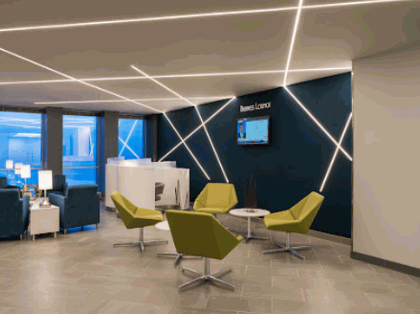
Residential Spaces
In residential applications, LED Linear Lighting solutions utilizing strip lights and customizable lighting kits offer homeowners the ability to create personalized lighting effects, accentuate living spaces, and enhance visual appeal.
The flexibility of LED strip lights allows for easy installation in various locations around the house, from under cabinets to highlight architectural features.
With the advancements in technology, these lighting solutions provide energy-efficient options that can significantly reduce electricity bills and contribute to a more sustainable lifestyle.
By adjusting the brightness and color temperature, homeowners can set the desired ambiance to suit different moods and occasions, whether it's a cozy evening at home or a lively gathering with friends.
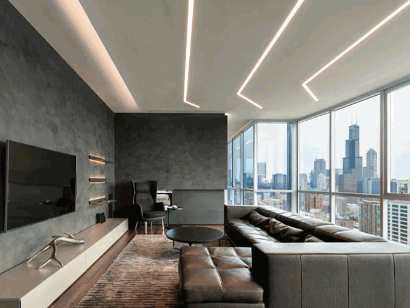
Outdoor Spaces
For outdoor applications, LED Linear Lighting brings benefits such as enhanced safety, creative lighting effects, and adherence to design recommendations for landscape, architectural, and security lighting purposes.
LED Linear Lighting ensures a higher level of safety in outdoor environments due to its durability and reliability, making it a popular choice for pathways, parking lots, and building facades. The versatility of LED Linear Lighting allows for the creation of stunning lighting effects that can accentuate outdoor features, such as trees, water features, and architectural elements.
In terms of design, utilizing LED Linear Lighting in outdoor spaces offers the flexibility to customize lighting setups according to specific requirements. Whether it's highlighting a focal point, creating a warm ambiance for outdoor gatherings, or enhancing the overall aesthetics of a property, LED Linear Lighting can be tailored to meet various design goals.
